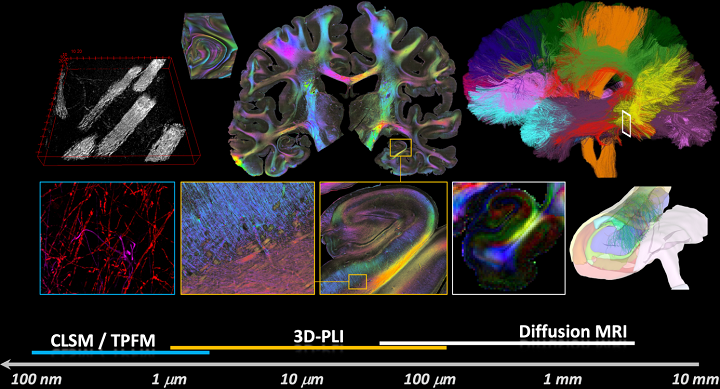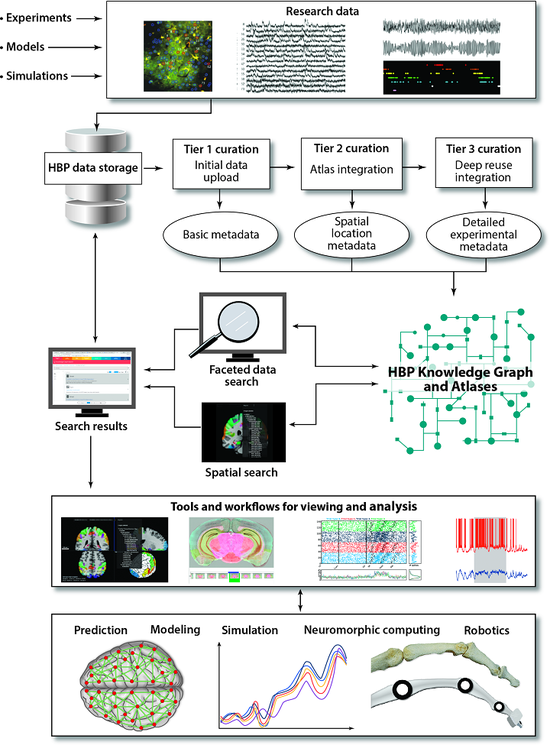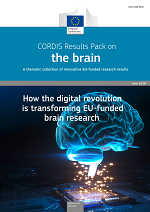The HBP: driving synergy between neuroscience and technology
16 September 2019
In a new PLOS Biology community page, leading scientists from the Human Brain Project give an overview of the project’s science and infrastructure approach, as well as opportunities for the scientific community to make use of novel computational ressources for neuroscience.
In a new PLOS Biology community page, leading scientists from the Human Brain Project give an overview of the project’s science and infrastructure approach, as well as opportunities for the scientific community to make use of novel computational ressources for neuroscience.
The article outlines the Human Brain Project’s scientific approach for integrative multi-scale neuroscience and the ongoing creation of a lasting European Research Infrastructure for investigating the brain. Leaders of the project describe new developments, ranging from the transformation of neuroscience through supercomputing and new informatics tools to handle large complex data, to novel approaches in digital medicine and new computers that mimic how the brain works. Find the full paper here: The Human Brain Project - Synergy between neuroscience, computing, informatics, and brain-inspired technologies
Abstract
The Human Brain Project is a European Flagship project with a ten years horizon aiming to understand the human brain and translate the neuroscience knowledge into medicine and technology. To achieve such aims, the HBP explores the multi-level complexity of the brain in space and time, transfers the acquired knowledge to brain-derived applications in health, computing, and technology, and provides shared, open, computing tools and data through the HBP Integrated Platform as a European Research Infrastructure. We discuss how the HBP creates a trans-disciplinary community of researchers united by the quest to understand the brain, with fascinating perspectives of societal benefits.

Neuroscience: Understanding the brain at multiple scales
Bridging between levels of organization and vast differences in scale is one of the biggest challenges in brain science. The image shows an example from the area of brain connectivity. To link the vast but heterogenous data produced by the many increasingly high-resolution methods of experimental brain science, the Human Brain Projects scientists and engineers work together to create an open computationally powered research infrastructure.

The European brain research infrastructure
“This infrastructure consists of different components—neuroinformatics, simulation, high-performance analytics and computing, neuromorphic computing, and neurorobotics. To enable interdisciplinary research, a seamless transition and integration of the different components and data is necessary. Collaborating with the neuroscience branches, the HBP is developing and providing workflows, from organizing and storing data and making them accessible according to the Findable Accessible Interoperable Reusable (FAIR) data principles [9] to data analysis, modeling, simulation, and brain-inspired technologies (Fig 2).”
This interplay is mutually beneficial - for neuroscience and technological innovation. In brain research it establishes a new e-Science approach, opening up all the new possibilities that the most advanced information technologies have to offer for tackling the brains complexity. Simulataneously new developments in traditional and neuromorphic computing, artificial intelligence and robotics are driven and inspired by joint work of neuroscientists and engineers.
Original Publication
Katrin Amunts ,Alois C. Knoll,Thomas Lippert,Cyriel M. A. Pennartz,Philippe Ryvlin,Alain Destexhe,Viktor K. Jirsa,Egidio D’Angelo,Jan G. Bjaalie: The Human Brain Project—Synergy between neuroscience, computing, informatics, and brain-inspired technologies. PLOS Biology, July 1st. https://doi.org/10.1371/journal.pbio.3000344
See also:

How the digital revolution is transforming EU-funded brain research



